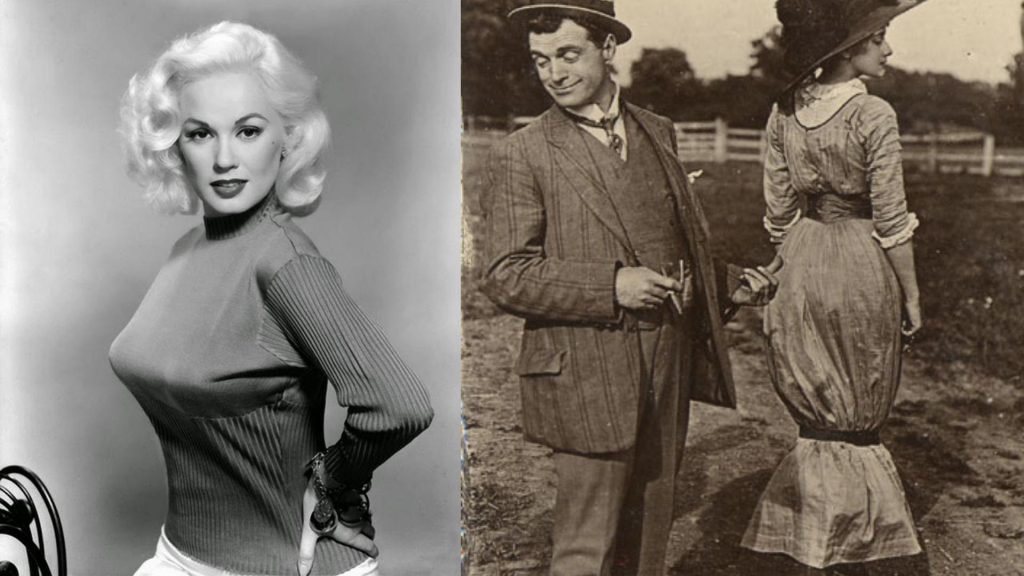Beauty may be synonymous with pain, but there exists a dark underbelly in the world of fashion where trends turn downright torturous. Throughout history, peculiar moments have given rise to some of the most bewildering and nightmarish fashion statements imaginable. These are the styles that, with any luck, have been banished to the annals of history, never to resurface. While fashion is known for its cyclical nature, some trends should remain firmly locked away, never to see the light of day again.
1. Flour Sacking: Fashion Born from Necessity
Few things are more disheartening than a trend forged in the crucible of the Great Depression. In an era when thriftiness was paramount, flour sacks emerged as an unlikely fabric for women’s attire. The zenith of this trend came during the late 1930s and early 1940s, when rural fashion reached its apex. Resourceful women who could wield a needle deftly became the fashion icons of their time, dominating national sewing competitions that sprung up across the United States.

Thriftiness became the hallmark of the era, and the trend known as “flour sacking” found traction far and wide. Some adept seamstresses even turned their flour sack dresses into a source of income, selling them to others. This trend garnered such prestige that contests sponsored by organizations like the National Cotton Council and the Textile Bag Manufacturers Association allowed women to showcase their flour sack creations, thereby enhancing the trend’s fashion credentials.
By the 1940s, savvy manufacturers catered to the craze by producing sacks in brighter colors and adorned with intricate patterns, hoping to capitalize on aesthetics. Notably, large sacks of feed and flour were especially prized, as they provided ample material. So, when life bestowed flour sacks upon them, these women did the only sensible thing: they fashioned them into dresses.
2. The Tuberculosis Chic: A Macabre Fascination
Fashion history has witnessed its fair share of bizarre trends, but few are as perplexing as the fascination with emulating the appearance of tuberculosis. During the Victorian era, it was en vogue to mimic the gaunt and pallid look associated with the final stages of this deadly disease.

This morbid fixation found inspiration in popular literature of the time, particularly in tragic tales like “La Dame aux Camelias.” Given the rampant prevalence of tuberculosis, this emaciated look became a coveted and fashionable aesthetic, reaching its pinnacle between 1780 and 1850.
The thin, ghostly appearance brought on by tuberculosis already aligned with the upper classes’ beauty ideals. Paradoxically, women of the Victorian era willingly starved themselves and shunned sunlight in pursuit of a consumptive visage. The lengths to which fashion went for allure could be rather unattractive.
3. Hobble Skirts: A Fashionable Straitjacket
In a feat that now seems utterly implausible, the hobble skirt swept the fashion scene of the 1910s. The trend was so pervasive that it’s nearly impossible to attribute its invention to a single individual, as everyone wanted to bask in its glory. The early 1910s marked a turning point when women sought liberation from the constraints of prior fashion trends, shedding layers of petticoats, voluminous hoops, and excessive fabric. Instead, they embraced a bold departure: skirts that bound their ankles together.

As this new skirt silhouette journeyed from Paris to the United States, it ignited a veritable fashion scandal. Cartoonists delighted in caricaturing women attempting to navigate the restrictive skirts, while The New York Times dedicated a substantial article to the impact on the textile industry, lamenting the sacrifice of countless petticoats to this novel trend. The article dubbed these skirts as “an ungraceful and immodest freak of fashion” and invited readers to contemplate the potential hunger of 10,000 families caused by petticoat scarcity.
Nonetheless, the hobble skirt refused to fade into obscurity. So widespread was its adoption that streetcars and trains had to modify their entrance steps to accommodate women’s constrained strides. The hobble skirt might have continued its dominance if not for the disruptive influence of World War I. With fabric restrictions and a shortage of labor in Paris, the fashion industry underwent a seismic shift, ultimately liberating women from their hobble-bound attire. Astonishingly, they chose not to revert to the cumbersome petticoats of yesteryears.
4. Scheele’s Green: Poisonous Beauty
If beauty is truly synonymous with pain, then Scheele’s green stands as the most exquisite hue ever conceived. This captivating green pigment, born in the 1770s at the hands of Swedish chemist Karl Scheele, possessed the unfortunate distinction of being both cost-effective and versatile, finding its way into clothing, wallpaper, and various other items. Yet, its beauty concealed a deadly secret—it was laced with arsenic.
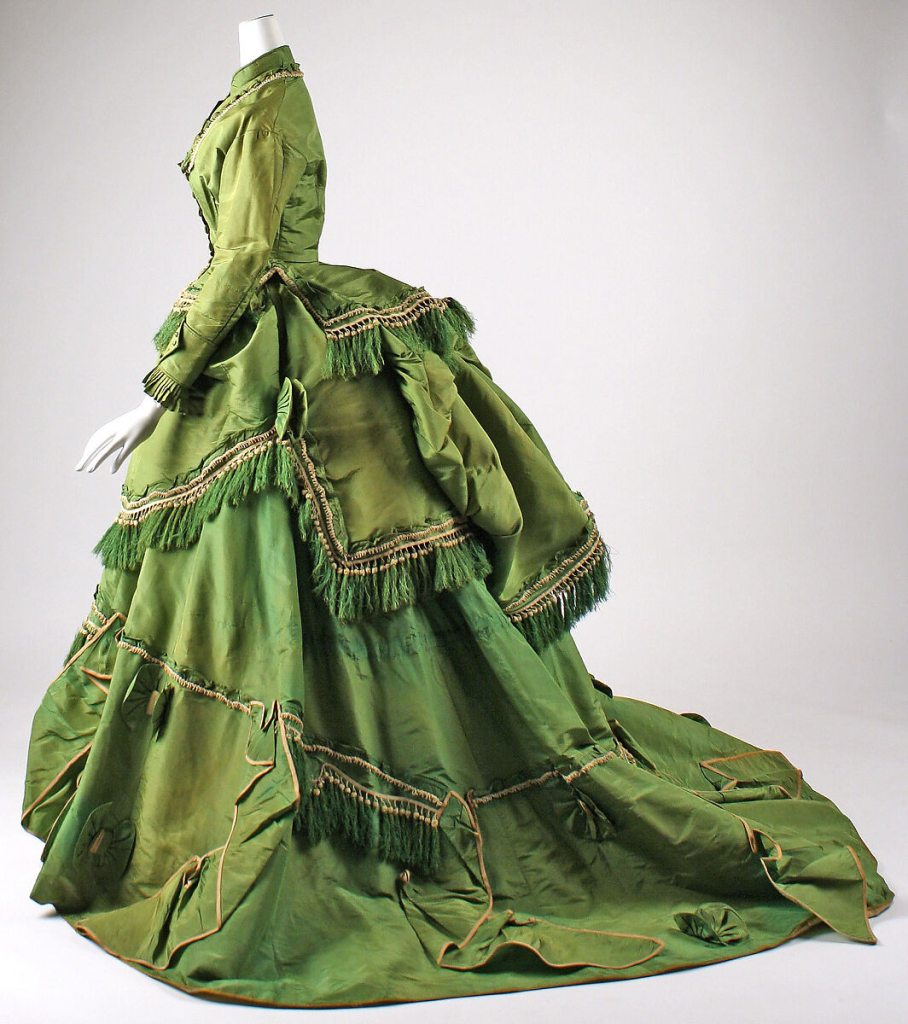
Scheele’s green graced ball gowns and adorned curtains, permeating every facet of home fabrics. Its ubiquity was such that it even surrounded the formidable figure of Napoleon during his final days, possibly contributing to his demise. Victorian Britain and Europe embraced this toxic pigment with open arms, and Scheele’s green may have claimed numerous unwitting victims. Its reign in the world of fashion endured for a century, a century tinged with tragedy, until another chemist unveiled its perilous nature.
5. Bird Masks: A Plague-inspired Paradox
Bird masks straddle the line between fashion statement and professional necessity. Initially donned during the 17th century as a safeguard against the plague, they transcended their utilitarian origins to become a fixture in costume fashion, persisting even today as a favored choice for masquerades.
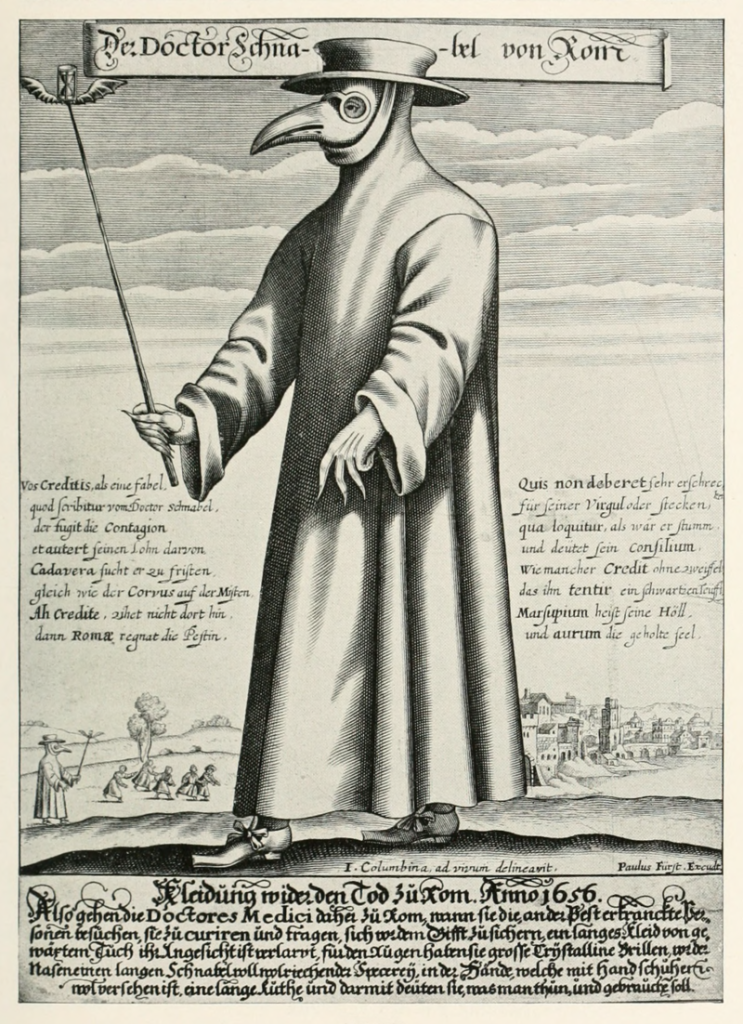
The plague, a scourge that had decimated a third of Europe’s population in the 14th century and periodically resurfaced, necessitated these masks for doctors tasked with tending to the afflicted. However, these beak-adorned masks were not merely fashion accessories; they served a practical purpose. Filled with fragrant flowers and herbs, they were worn over the nose to shield doctors from the noxious stench of death and decay as they carried away the deceased. These masks owed their existence to the miasma theory, which held that diseases spread through putrid, foul-smelling gases produced by decomposition.
6. Crinolines: The Deadly Dance of Petticoats
A quintessential feature of any period film set in the latter half of the 1800s, the crinoline took center stage in “Gone With the Wind” to such an extent that it should have received top billing. However, beneath its grandeur lay one of fashion’s most perilous and ill-conceived trends. Designed to impart an extravagant bell shape to women’s skirts, crinolines, which were stiff petticoats occasionally equipped with frames, unleashed a wave of tragedy during their time in the fashion spotlight.
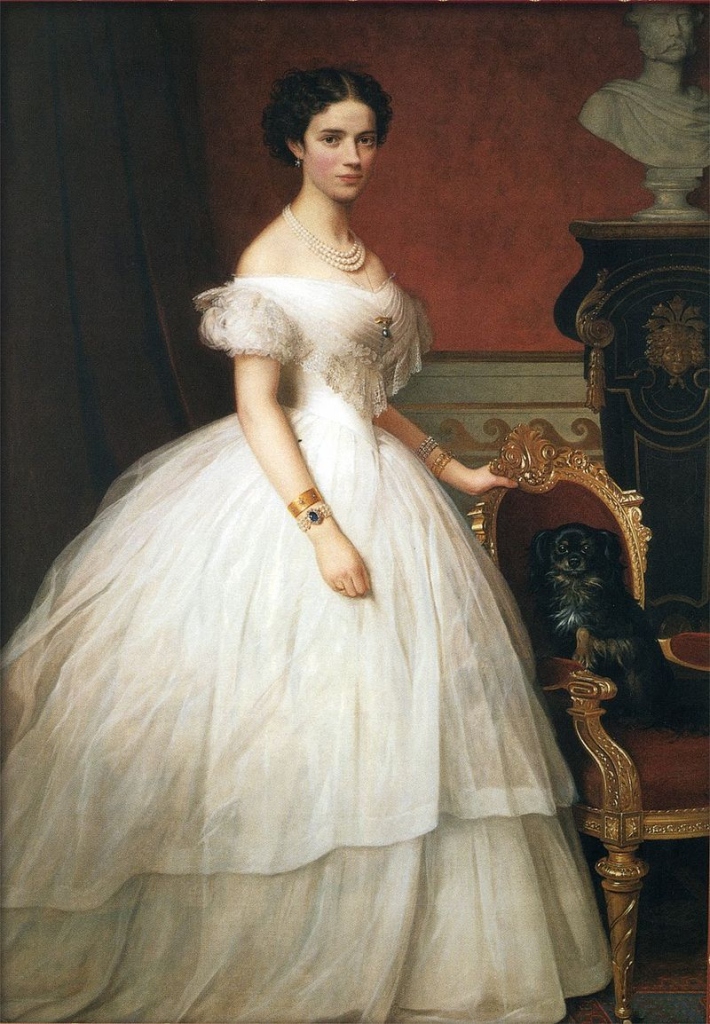
At their zenith in the 1850s and 1860s, crinolines rendered skirts excessively voluminous and puffy, transforming them into hazards. During these two decades alone, an estimated 3,000 women in England perished due to fires ignited by their crinolines. The combination of voluminous skirts and open flames proved disastrous, impeding quick escapes from conflagrations. Some unfortunate women met their end simply by standing too close to a fireplace, while others fell victim to large-scale calamities.
The most notorious crinoline catastrophe unfolded in 1863 at the Church of the Company of Jesus in Santiago, Chile. In a horrific event, as many as 3,000 lives were claimed due to the highly flammable crinolines present in the room. By 1864, it was estimated that almost 40,000 women worldwide had perished in crinoline-related fires since 1850.
7. Bullet Bras: The Pointed Pursuit of Fashion
An anomalous trend confined to the late 1940s and 1950s, bullet bras briefly dominated the fashion scene. Characterized by their sharply pointed cups, these bras adorned the well-dressed women of the era and some designs even posed genuine hazards to onlookers, capable of injuring an eye. The bullet bra became the quintessential accessory for the classic pinup girls of the time.

Formally known as the Chansonette bra, it made its mark through Frederick’s of Hollywood and soon became a fashion icon. World War II played a role in the bullet bra’s ascendancy, as fabric restrictions necessitated innovations. Spiral stitching and alternative fabrics imbued bras with a stiffer and more pointed structure.

The bullet bra’s popularity waned in the late 1950s, yielding to the softer and more gender-neutral fashions of the 1960s. Nevertheless, it experienced a resurgence in the 1990s, thanks in part to Madonna’s “Blonde Ambition” look.
8. Armadillo Shoes: A Modern Marvel of Madness
Though their history is relatively brief, having been designed by Alexander McQueen in 2010, armadillo shoes are destined to be remembered as one of the most outlandish creations in fashion history. Let us all hope that these shoes remain confined to the annals of fashion history, never gracing runways or award shows again.
The initial lineup of armadillo shoes was carved from wood, an uncomfortable prospect to say the least. These shoes gained notoriety when worn by Lady Gaga, known for her penchant for unconventional fashion choices. They were sold at astronomical prices, ranging from $3,900 to $10,000 per pair. Only a select few were ever produced, reserved for exclusive clientele, including Lady Gaga herself. Yet, even Gaga, a master of eccentricity, found them difficult to walk in. No one should be surprised by that revelation.
9. Zibellinos: Noble Nonsense in Fashion
Also referred to as tippets and flea furs, zibellinos held a prominent place in the world of fashion, exclusively adorning the wealthiest individuals. For high-ranking nobles and members of royal families, a must-have accessory took the form of one of the most baffling and grotesque items ever conceived.

Essentially, a zibellino consists of the pelt of a marten or sable, complete with the head still attached. These macabre adornments were draped casually over one arm, an extravagant display of morbidity. Some took the extravagance to new heights, encrusting the heads with gold and jewels. It wasn’t until the late 16th century that faux versions were introduced, sparing animals from this grisly fate.
10. Black Teeth: The Curious Case of Contrasting Trends
In contemporary fashion, the pursuit of gleaming white teeth pervades every facet of media. Advertisements for teeth whiteners inundate television and magazines. Yet, in Japan’s past, a starkly contrasting trend prevailed, one that demanded teeth as black as night. Blackened teeth symbolized wealth and sexual allure, especially for women in Japanese society.
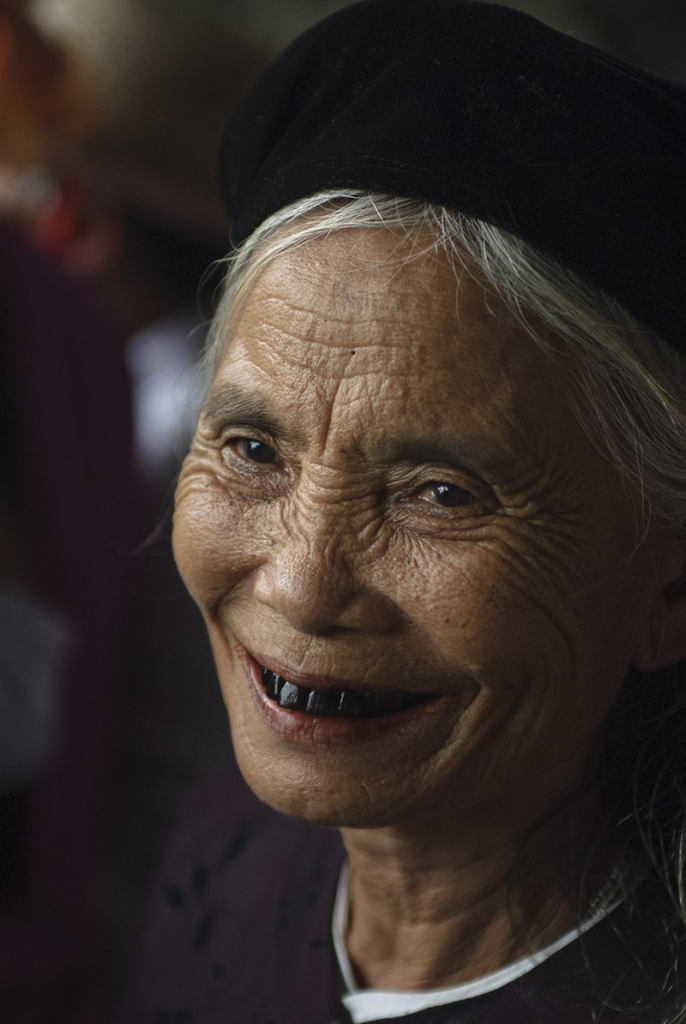
To achieve this aesthetic, individuals imbibed a black dye infused with cinnamon and spices for flavor. Known as “ohaguro,” this practice persisted until its prohibition in 1870, when white teeth became the new norm. Ironically, it turns out that black teeth were, in fact, healthier. The dye mixture used to blacken teeth had a protective, lacquer-like effect on enamel, safeguarding against decay and even deterring certain bacteria, promoting better oral health. Perhaps this trend, once dismissed, might experience a resurgence in the name of dental well-being.
Fashion history, replete with bizarre and perilous trends, serves as a testament to the evolving and often perplexing nature of human aesthetics. While some styles endure the test of time, others, such as those detailed here, find themselves relegated to the annals of history, never to return.
